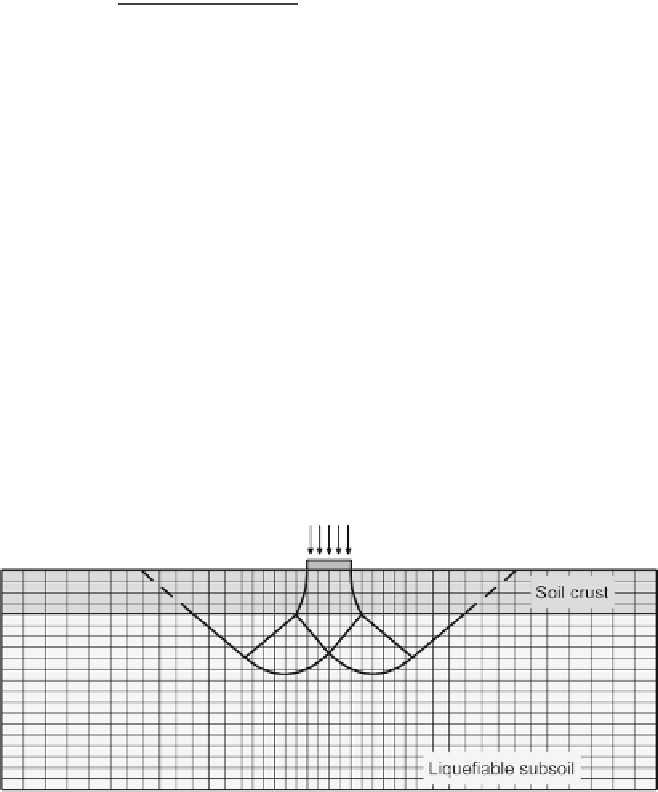Geoscience Reference
In-Depth Information
2.2. STATIC BEARING CAPACITY DEGRADATION
Asimplefailuremechanismwhichcanbeusedtocomputethedegradedbearingcapacity
of surface foundations at the end of shaking, while the soil below the soil crust is still in
a liquefied state, is shown in Figure 11.3: the footing punches through the crust forcing
the development of a wedge-type failure mechanism within the liquefied subsoil. Based
on this mechanism, for the simplified case of vertical slip surfaces within a clay crust,
Naesgaard et al. (1997) proposed the following expression for the degraded factor of
safety of stripfootings:
2
HC
u
+
5
.
14
τ
RES
B
FS
deg
=
(11.3)
Q
where
H
and
C
u
are the thickness and the undrained shear strength of the clay crust,
while
τ
RES
is the residual shear strength of the liquefied sand (e.g. Seed and Harder,
1990; Stark and Mesri, 1992; Olson and Stark, 2002) and
Q
is the static load carried by
the footing.
Working along a parallel track, Cascone and Bouckovalas (1998) use also the failure
mechanism of Figure 11.3 but assume that the shear strength of the liquefied subsoil is
expressed in terms ofa degraded frictionangle
ϕ
computed as
tan
ϕ
=
(
1
−
U
)
tan
ϕ
o
(11.4)
/
σ
v
o
is the excess pore
pressure ratio induced by seismic shaking, taken as uniform over the entire liquefied
layer. Consequently the degraded bearing capacity iscomputed as
where
ϕ
o
is the actual friction angle of the sand and
U
= ∆
u
⎧
⎨
⎫
⎬
5
14
C
u
B
2
C
u
H
.
1
2
γ
BN
γ
+
γ
HN
q
B
Q
degr
ult
−
γ
HB
+
=
min
(11.5)
⎩
⎭
Fig. 11.3. Composite mechanism for end-of-shaking failureof shallow foundations
restingona soil crust over liquefied subsoil

